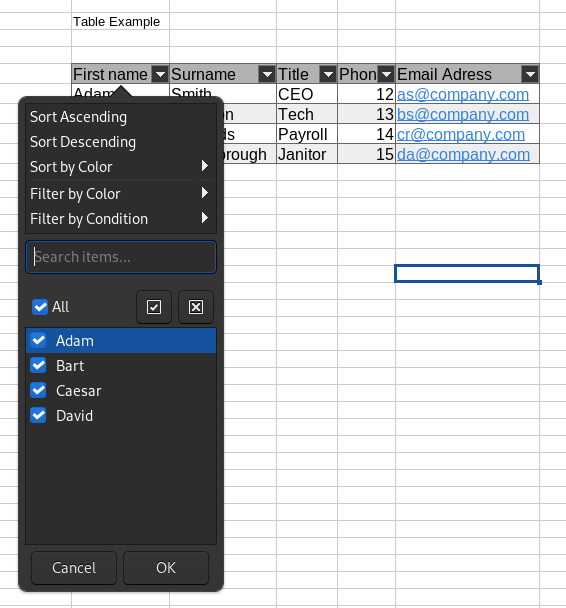

Historically I’ve gone for Lenovo laptops, at least for their business segments they’ve been good with releasing updates to fix security issues for many years. Having a promise of 5 years of firmware updates would be lovely though.
#nobridge


Historically I’ve gone for Lenovo laptops, at least for their business segments they’ve been good with releasing updates to fix security issues for many years. Having a promise of 5 years of firmware updates would be lovely though.


For some reason I imagine a toilet that automates a stool test and blood test and gives you a health report every month.


AUX, MicroSD, smaller format and big battery was the reason I went for my Sony Xperia 10 IV (budget phone, got mine new for 260€) device.
Sadly their software updates are only for two years as otherwise I would’ve been interested in the Sony Xperia 5 series (compact flagship). I’m not paying flagship prices for a phone that stops updating after two years.
I hope that the EU regulation forcing 5 years of updates for phones and tablets starting June 2025 will allow me a compact flagship phone with aux, big battery and updates for a long time.
https://repair.eu/sv/news/new-eu-rules-smartphones-and-tablets-will-follow-new-ecodesign-requirements-by-june-2025/


OpenWrt with 802.11r and 802.11s configured will work as a mesh network with roaming functionality.
https://openwrt.org/docs/guide-user/network/wifi/mesh/80211s
https://openwrt.org/docs/guide-user/network/wifi/roaming
Not many Ruckus devices that are supported though:
Brand - Model - Supported Version
Ruckus - ZF7025 - 23.05.2
Ruckus - ZF7321 - 23.05.2
Ruckus - ZF7341 - 23.05.2
Ruckus - ZF7343 - 23.05.2
Ruckus - ZF7351 - 23.05.2
Ruckus - ZF7352 - 23.05.2
Ruckus - ZF7363 - 23.05.2
Ruckus - ZF7372 - 23.05.2
https://openwrt.org/toh/start?toh.filter.supportedcurrentrel=22.03|23.05
Tables are something that’s just a given in excel, takes 10 seconds to setup, and you get automatic sorting and filtering, with near-zero effort.
I also find excel easier to use than libreoffice calc as I’m more experienced with excel. This example though is easily solved by using Autostyle + Autoformat



Software: OpenWrt - https://openwrt.org/docs/guide-user/network/wifi/roaming
Devices: Supported devices found here - https://openwrt.org/toh/start?toh.filter.supportedcurrentrel=22.03|23.05


pfsense and opnsense are very similar. The pfsense devs has acted like jackasses towards the opnsense gang. They are both great for a router/firewall/vpn device. I would use external access points with them.
I think there are more addons to pfsense than opnsense.
OpenWrt is great when it comes to WiFi, but I find it much less intuitive to use for router/firewall parts. Could be that I am used to the way pfsense and opnsense do things.
Neither do switching from what I know, so pair the router with a switch of your choice.


Next time I build a PC, I plan to spend extra on hardware that can run games decently while producing as little heat as possible. My current PC is like a space heater when it’s running and it’s unbearable to play games on it for any extended periods during the summer months.
The only reason I went for an 80+ Platinum PSU instead of an 80+ Bronze PSU is to make it generate less heat (and the fact that the platinum had a really nice price at the time). Doing it for power savings isn’t worth it, but getting a cooler case is nice.
https://www.tomshardware.com/news/what-80-plus-levels-mean,36721.html


sending personal data to someone else’s computer.
I think this is spot on. I think it’s exciting with LLMs but I’m not gonna give the huge corporations my data, nor anyone else for that matter.


I’ll have a look! Cheers!


It didn’t end
They actually flip flop a lot.
2006: Migration to LiMux begins
2008: 1200 out of 14,000 have migrated to the LiMux environment
2013: Over 15,000 LiMux PC-workstations (of about 18,000 workstations)
2016: Microsoft moves german HQ to Münich
2017: Dumping Linux https://www.linuxinsider.com/story/munich-city-government-to-dump-linux-desktop-84307.html
2020: Going back to Linux https://www.zdnet.com/article/linux-not-windows-why-munich-is-shifting-back-from-microsoft-to-open-source-again/
2023: Microsoft opens new Experience Center in Münich https://www.munich-business.eu/meldungen/neues-microsoft-experience-center-emea.html
2023: Analysing what needs to be done to switch to Win10 before new vote https://www.tweaksforgeeks.com/ditching-linux-for-windows-after-wannacry-is-too-risky-for-munich-green-party-warns/
https://lemmy.world/comment/7251741




Path of Exile, Titan Quest, Grim Dawn, Torchlight 2
Isn’t the F11 preview similar?
Alternatively, you can create new users from the command line.
This can be done as follows:
If synapse was installed via pip, activate the virtualenv as follows (if Synapse was installed via a prebuilt package, register_new_matrix_user should already be on the search path):
cd ~/synapse
source env/bin/activate
synctl start # if not already running
Run the following command:
register_new_matrix_user -c homeserver.yaml
This will prompt you to add details for the new user, and will then connect to the running Synapse to create the new user. For example:
New user localpart: erikj
Password:
Confirm password:
Make admin [no]:
Success!
This process uses a setting registration_shared_secret, which is shared between Synapse itself and the register_new_matrix_user script.
It doesn’t matter what it is (a random value is generated by --generate-config), but it should be kept secret, as anyone with knowledge of it can register users, including admin accounts, on your server even if enable_registration is false.
https://element-hq.github.io/synapse/latest/setup/installation.html